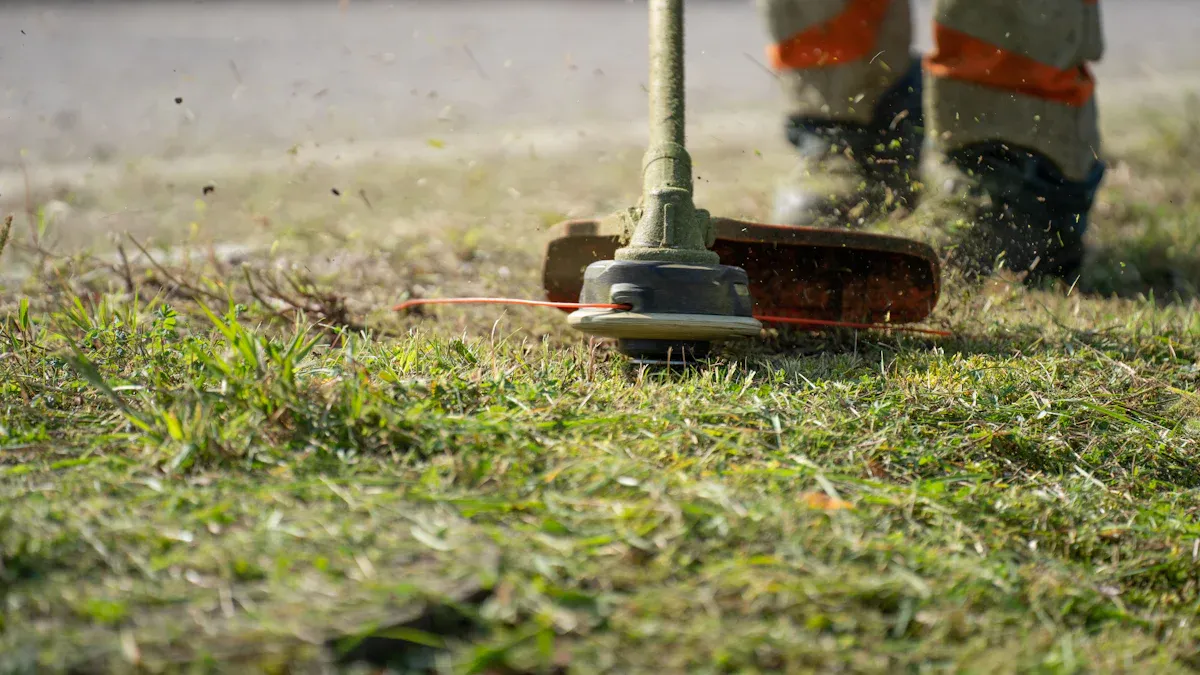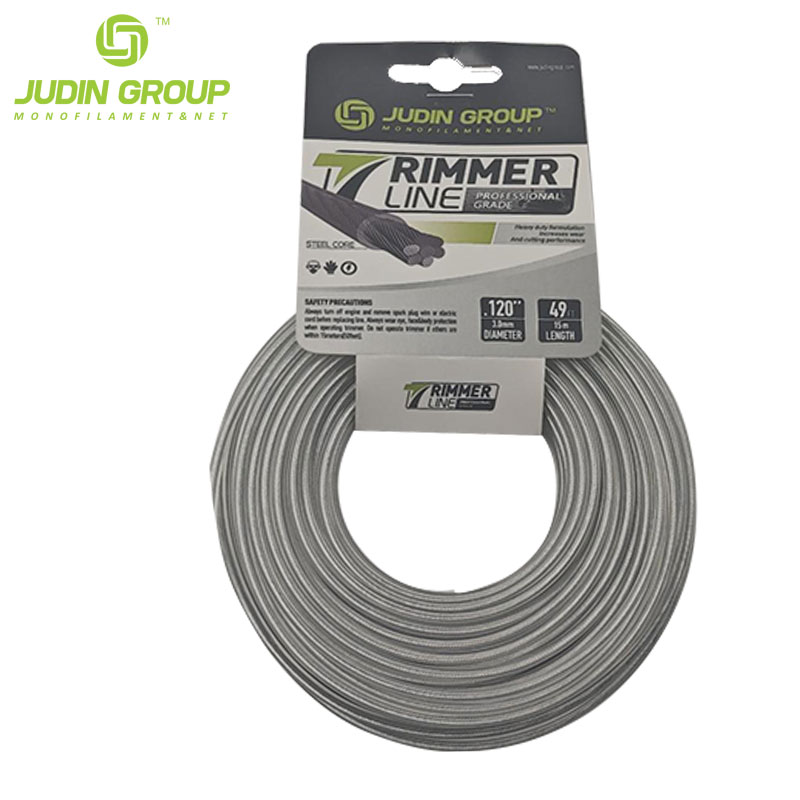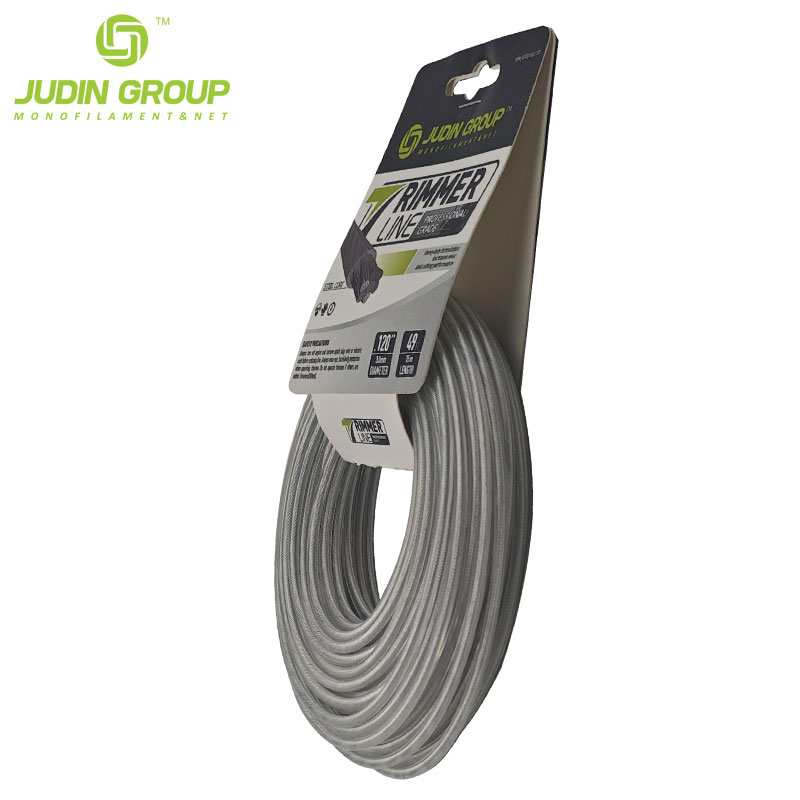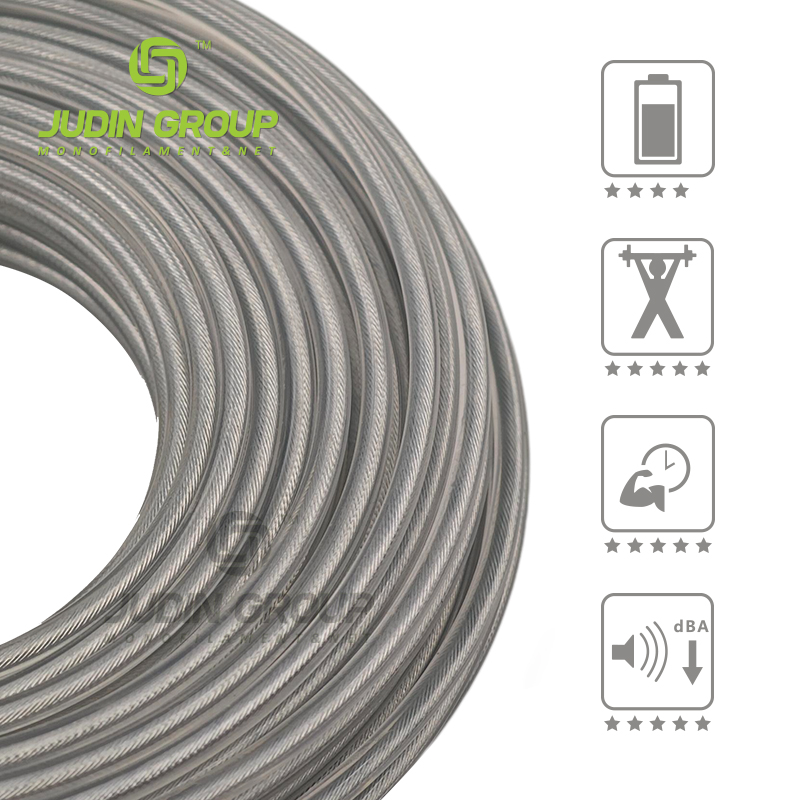Are you ready to tackle your toughest landscaping challenges in 2025? Choosing the right trimmer line can make all the difference. A durable and efficient line saves you time and effort while delivering a clean, professional finish. Plus, finding one that’s compatible with your trimmer ensures smooth operation every time.
Key Takeaways
- Pick strong trimmer lines for thick grass and tough weeds. They cut well and last longer without needing many replacements.
- Use the right thickness of trimmer line for your work. Thick lines are great for big jobs, and thin lines work for small tasks.
- Make sure your trimmer line fits your trimmer model. Read the manual to find the right size and avoid problems.
Top Trimmer Line Options for Tough Jobs

Heavy-Duty Trimmer Lines for Thick Grass and Weeds
When you’re dealing with thick grass or stubborn weeds, you need a trimmer line that can handle the pressure. Heavy-duty options are designed to cut through dense vegetation without breaking or wearing out quickly. These lines often feature reinforced materials like nylon or a combination of nylon and other durable cores. They’re perfect for professional landscapers or anyone maintaining large properties.
Look for lines with a thicker diameter, as they provide more cutting power. A round or twisted shape can also help reduce resistance, making your trimming tasks smoother and faster. With the right heavy-duty trimmer line, you’ll spend less time replacing broken lines and more time getting the job done.
Best Trimmer Lines for Brush and Overgrown Areas
Tackling brush or overgrown areas requires a trimmer line built for extreme conditions. These lines are typically thicker and made from high-strength materials to cut through tough stems and woody plants. Some even come with unique shapes, like square or star-shaped edges, to deliver sharper cuts.
If you’re clearing out overgrown spaces, consider a line that minimizes vibration and engine drag. This not only makes the job easier but also extends the life of your trimmer. A high-performance trimmer line can transform a daunting task into a manageable one.
Judin .120” Round Heavy Duty Metal Core Trimmer Line
The Judin .120” Round Heavy Duty Metal Core Trimmer Line is a game-changer for tough landscaping jobs. Its soft nylon surface and metal core create a perfect balance of flexibility and strength. This line resists breaking under pressure, making it ideal for thick grass, weeds, and even brush.
Its round shape reduces resistance, ensuring smoother operation and less vibration. You’ll notice how efficiently it cuts while keeping your trimmer quieter. Plus, it’s compatible with all standard trimmer heads, so you won’t have to worry about compatibility issues. Whether you’re a professional landscaper or a homeowner, this trimmer line is a reliable choice for 2025.
 |
 |
 |
Choosing the Right Trimmer Line for Your Landscaping Needs
Key Trimmer Line Materials and Their Benefits
When choosing a trimmer line, the material plays a big role in its performance. Nylon is one of the most common materials. It’s lightweight, flexible, and durable, making it great for everyday trimming tasks. For tougher jobs, you might want a reinforced nylon line. These often include added materials like aluminum or polymers to boost strength and resist wear.
Some lines even feature a metal core. This design gives you extra durability and helps the line handle heavy-duty tasks like cutting through thick weeds or brush. If you’re looking for a balance of strength and flexibility, a metal-core trimmer line could be your best bet. Each material has its own strengths, so think about your landscaping needs before deciding.
Matching Line Thickness to Landscaping Tasks
The thickness of your trimmer line matters more than you might think. Thinner lines, like those under 0.080 inches, work well for light trimming around flower beds or small lawns. Medium lines, ranging from 0.080 to 0.110 inches, are ideal for thicker grass and moderate weeds. For heavy-duty tasks, like clearing brush or overgrown areas, you’ll need a line that’s 0.120 inches or thicker.
Using the right thickness ensures efficient cutting and reduces the chance of the line breaking. If you’re unsure, check your trimmer’s manual for recommendations. Matching the line thickness to your task can save you time and effort.
Ensuring Compatibility with Your Trimmer Model
Not all trimmer lines fit every trimmer. Before buying, make sure the line is compatible with your model. Most trimmers have specific size requirements for the line diameter. Using the wrong size can cause poor performance or even damage your equipment.
You should also consider the type of trimmer head. Some heads work better with certain shapes, like round or twisted lines. If you’re using a universal trimmer line, like the Judin .120” Round Heavy Duty Metal Core Trimmer Line, you’ll have fewer compatibility issues. Always double-check your trimmer’s specifications to avoid any problems.
Tips for Maintaining and Using Trimmer Lines

Proper Storage to Maximize Trimmer Line Lifespan
Storing your trimmer line properly can make a big difference in how long it lasts. Heat and sunlight can weaken the material, causing it to become brittle. Keep your line in a cool, dry place to protect it from damage. A sealed container or storage bag works well for this. If you want to go the extra mile, soak the line in water for a few hours before use. This keeps it flexible and less likely to snap during trimming.
Techniques for Efficient Cutting and Reduced Wear
Using the right techniques can save you time and extend the life of your line. Always hold your trimmer at the correct angle—about 15 degrees works best for most tasks. Avoid hitting hard surfaces like rocks or concrete, as this can wear down the line quickly. Instead, focus on cutting grass and weeds at their base. Short, controlled movements are more effective than long, sweeping motions. This approach reduces strain on your trimmer and makes your work easier.
Signs It’s Time to Replace Your Trimmer Line
Knowing when to replace your line is key to keeping your trimmer running smoothly. If the line keeps breaking or fraying, it’s time for a new one. A noticeable drop in cutting performance is another sign. Check the length of the line regularly. If it’s too short, it won’t cut efficiently. Replacing the line when needed ensures your trimmer stays in top shape and ready for action.
Choosing the right tools can make your landscaping tasks easier and more efficient. The Judin .120” Round Heavy Duty Metal Core Trimmer Line stands out as a top choice for 2025. Take a moment to assess your specific needs and ensure compatibility with your trimmer. Don’t forget—proper care keeps your tools performing their best!
FAQ
What’s the best way to store trimmer lines?
Keep them in a cool, dry place. Avoid direct sunlight or heat. Soaking them in water before use keeps them flexible and durable.
How do I know which trimmer line fits my tool?
Check your trimmer’s manual for size requirements. Universal lines, like Judin’s .120” metal core line, work with most standard trimmer heads.
Can I use thicker lines for light trimming?
No, thicker lines are for heavy-duty tasks. Use thinner lines for flower beds or small lawns to avoid damaging delicate plants.
Post time: Mar-28-2025







